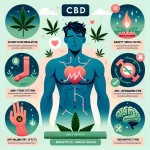Anyone who is sexually active (or watches an absurd amount of Comedy Central) has heard jokes about men who “can’t get it up.” There are strange phrases and excuses such as “whiskey dick” that men often tell other people to explain why they can’t become erect. With the rise of erectile dysfunction in millennial men, due to an increase in incredibly explicit and unrealistic porn and suggestive television, erectile dysfunction isn’t something new.
But, as with many other issues pertaining to and affecting women, society seems to have forgotten that women can also suffer for sexual dysfunction. In fact, according to WebMD, sexual dysfunction is relatively common and occurs more frequently in women. According to their research, 43 percent of women report some degree of difficulty to only 31 percent of men, but people have seen a long history of men being reluctant to admit they have something wrong.
Most men think that women typically have lower sex drives, and those who don’t are often slut shamed. No one ever stops to think that something may be medically wrong with a woman who isn’t aroused, or shows discomfort during sex. Painful sex in women seem to be reduced to she isn’t able to “handle” the man, and vaginal dryness is usually solved with manmade lubrication instead of a pause in sexual activity.
Women are also shamed for being “loose” and are told to tighten up their vaginal walls to cause pleasure for men. In actuality, issues such as painful sex, vaginal dryness and a lack of “relaxation” of the vaginal walls are some of the many red flags in female sexual dysfunction.
The Mayo Clinic medically defines Female Sexual Dysfunction as “persistent, recurrent problems with sexual response, desire, orgasm or pain.” Apparently, most women will experience this dysfunction at some point or another. Sexual response is not simply a touch in the right spot, or candles lit in a dim, vanilla scented room. Sexual response is an intricate and involved process of physical, mental and hormonal aspects. If either one of these aspects are absent, the entire response can be effected.
This is not to say sex has to be a big, detailed, emotional show. For mental needs to be met, two people don’t need to slowly undress each other (hashtag the notebook) and eat chocolate covered strawberries. Life isn’t a weird rom com with Tom Hanks or a 2010 Taylor Swift song.
A healthy mental involvement can mean anything as simple as sobriety, an understanding of what is about to happen, familiarity with the person and ultimately, the most important one, consent. Mental aspects can also be something that has nothing to do with the partner, just as most of the time men want to have sex, they have a mental block that has nothing to do with their partner that is preventing it. Women may have a strong desire for some hanky panky, but their bodies seem to have other plans. This is also where external and physical factors come in.

According to the Mayo Clinic, there are four major symptoms as to why women may have issues in bed. There is a low sex drive, meaning they just aren’t in the mood. The next symptom is sexual arousal disorder, which is the difficulty to be aroused or maintain arousal for the length of foreplay/intercourse.
Next, there is something a little more complex called an orgasmic disorder, meaning even with a sex drive, arousal and constant sufficient stimulation, the woman is unable to reach orgasm. And lastly, the most terrifying is sexual pain disorder, which is exactly what it sounds like: pain associated with any vaginal contact and stimulation.
There are a number of things that can trigger these changes. Women have to deal with the hormonal changes in medications such as birth control. Even though most women who purchase birth control have access to some stress-free lovin’, many of them will suffer from sexual dysfunction because of the birth control.
Women also deal with pregnancy and high rates of depression, causing chemical and hormonal imbalances, which in turn effects their sexual responses. Anxiety, usually from not being able to become aroused, also stops arousal. Believe it or not, just as blood flows to the penis, blood flows to the clitoris and if that blood flow is interrupted, so is sexy time.
Painful intercourse is the most serious form of sexual dysfunction. Painful intercourse can be a symptom of an STD, an underlying disease or disorder, cysts and other total vibe killers. There is nothing worse than getting ready to get down and having to experience excruciating pain (unless you’re into that sort of thing).
Ultimately, the decision to go to a doctor, whether that be of medicine or love, is up to the woman and the couple. There are plenty of sexology experts and gynecologist who are eager to help women loosen up and feel good. Sexual dysfunction is not just about keeping the partner happy, it could also interfere with masturbation and alone time with that Brad Pitt poster.
While the percentage of women who have orgasms by penetration alone are uncomfortably low, it doesn’t always mean their partner is under performing. However, if someone tells you that you aren’t enjoying yourself because of sexual dysfunction, they’re probably just doing a terrible job. Beware of men who tell you “it’s supposed to hurt,” because it’s not. Pain is a sign of a deeper problem, and no, it’s not a size issue (no matter what your tinder date says).
Anyone who has a vagina can suffer from these issues, even if they don’t identify as a woman. If something feels off down below, don’t be afraid to get it checked out. Women should always know and understand their bodies, so they can tell if something is off. In fact, everyone should get to know and understand themselves. Sexual dysfunction, in men and women, is nothing to be ashamed about, and it’s way more common than people think. Always remember: If it’s painful or dry, you gotta ask why.

















